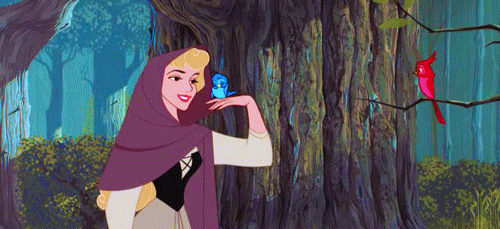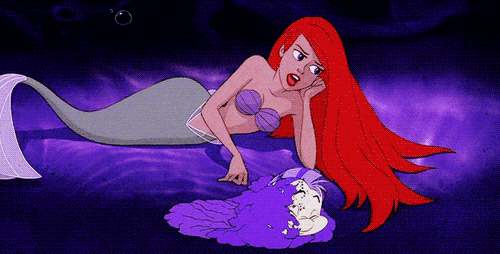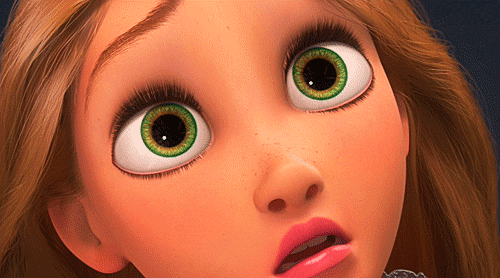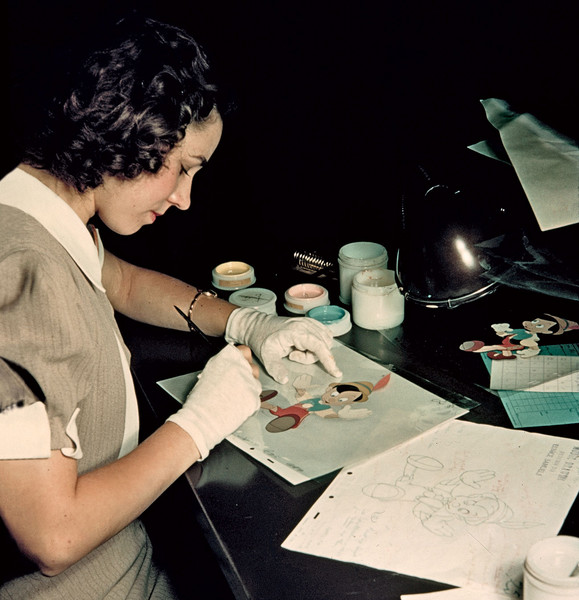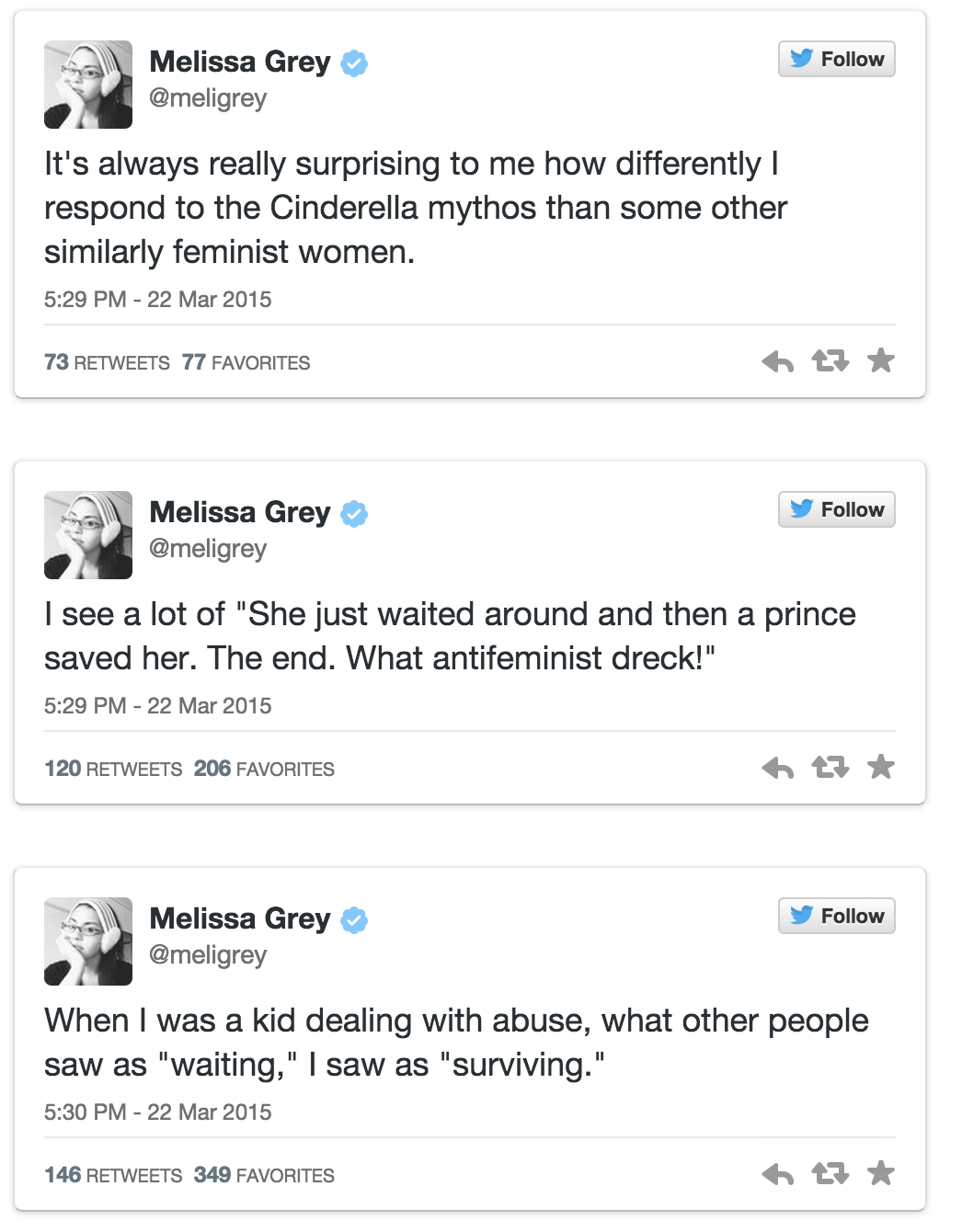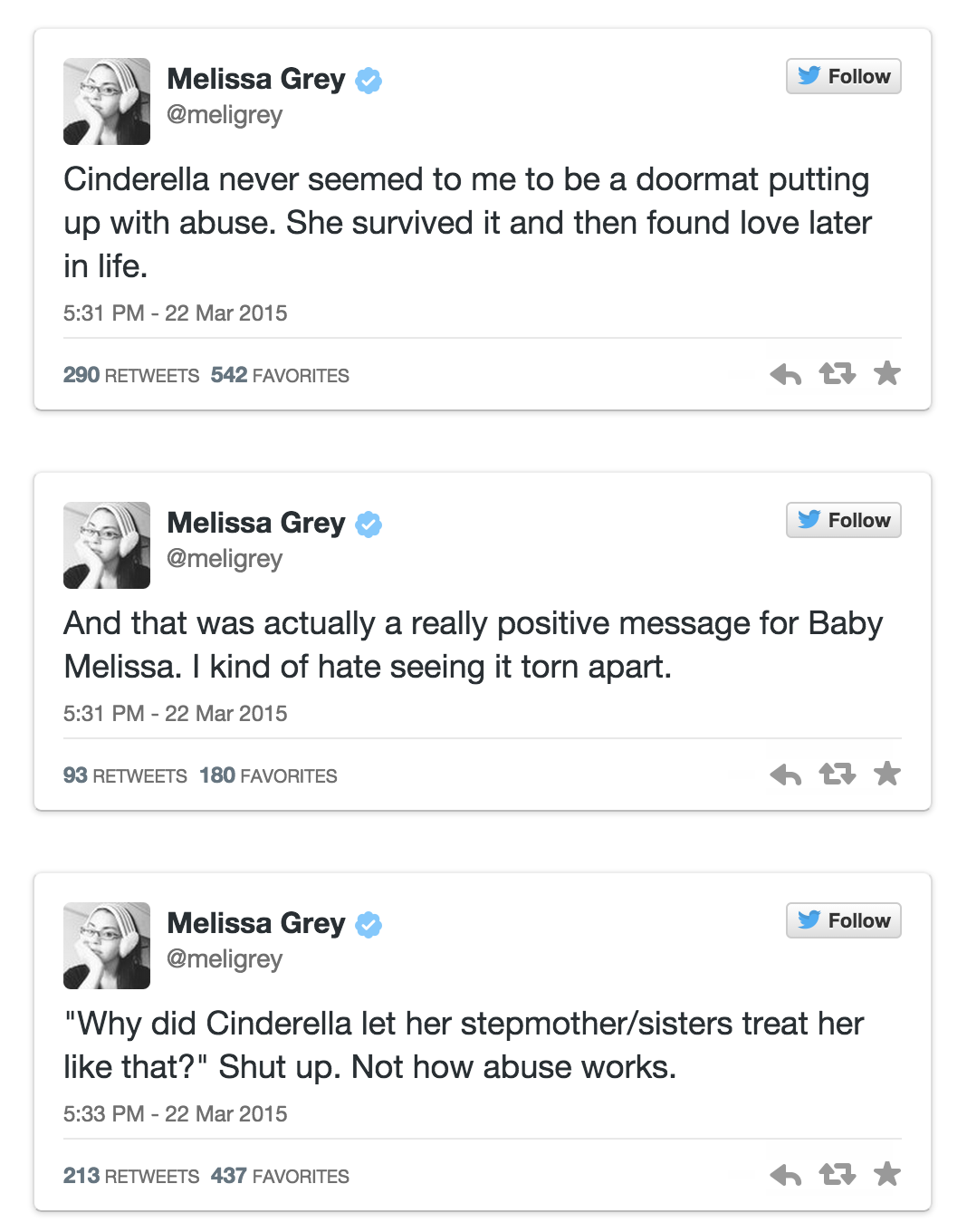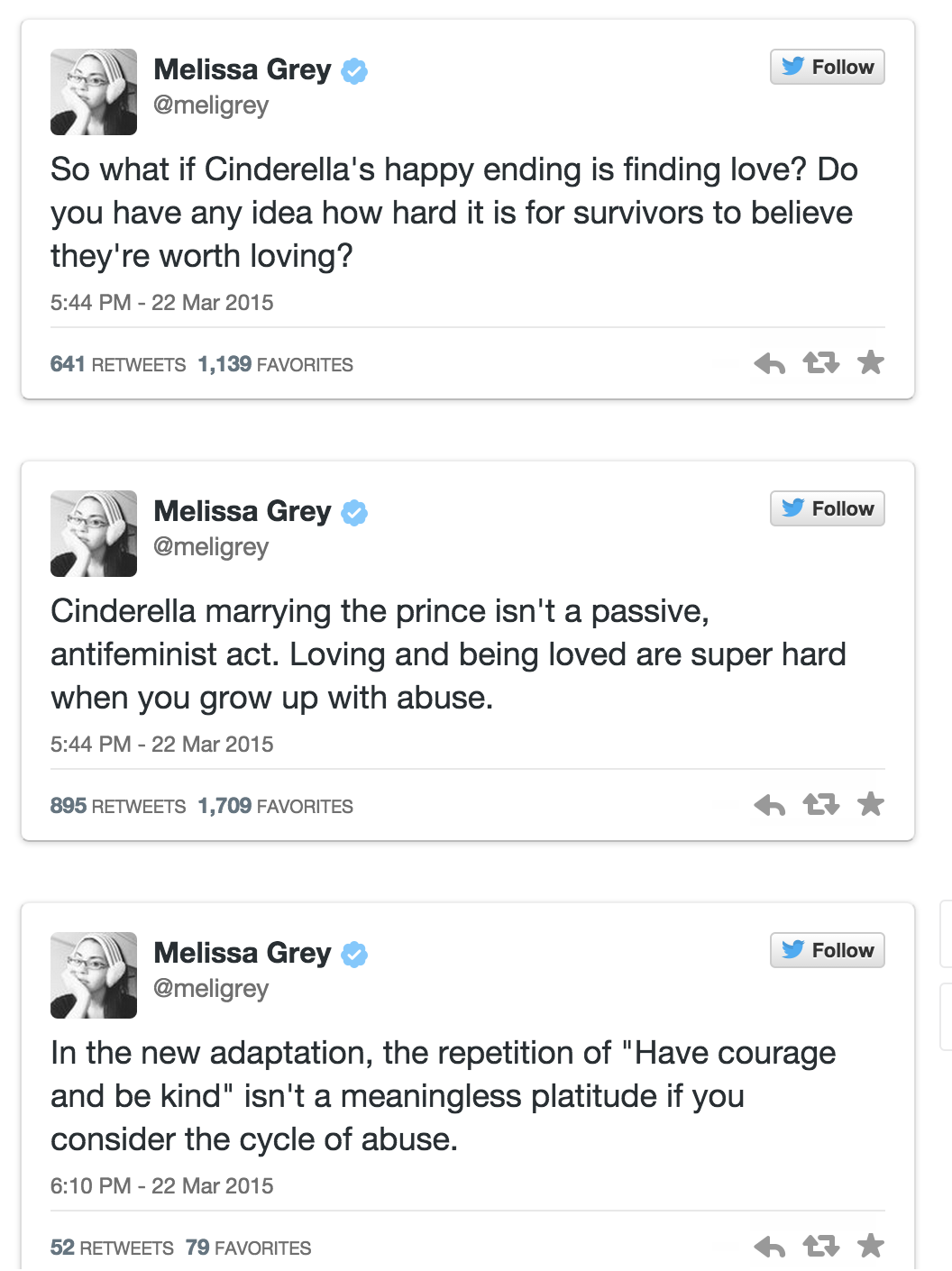Patricia Zohn is a culture columnist for the Huffington Post. Her column is called Culture Zohn. She also writes for Vanity Fair Magazine. The piece below is an in-depth history of the women who worked for Walt Disney as inkers and painters. In that time, women were not allowed to be anything more than inkers at the Walt Disney company. The piece details the way women were treated by the company and how they were often overworked and under-appreciated.
Behind the breakthrough magic of Walt Disney’s first animated feature, Snow White and the Seven Dwarfs, and his other 30s and 40s classics—Pinocchio, Fantasia, Bambi—toiled as many as 100 young women, the inkers and painters, working from dawn to dusk on thousands of cels that brought his dreams to life. The author recaptures their white-gloved esprit de corps, and a golden age of Disney that would be disrupted by strike, World War II, and, eventually, the Xerox machine.
BY PATRICIA ZOHN
‘Snow White has to be out by Christmas—if not it’ll be too bad for Disney’s,” 20-year-old platinum blonde Reidun “Rae” Medby wrote her boyfriend from her Hollywood apartment late one night in the fall of 1937. She was barely able to keep her eyes open after a month of working weekends and double shifts in the Ink and Paint department, the all-female “finishing school” of hand-drawn animation, during the final push on the groundbreaking film. “The minute I get a pen in my hand my brain goes numb—just like it does at the studio. Don’t be upset if I start inking ducks and mice.”
The Mickey Mouse and Donald Duck color short films that had lured Rae to the jumbled Hyperion Avenue studio had grown ever more expensive—even a “mathemagician” like Walt’s brother Roy couldn’t shrink the six months of preparation, the thousands of cels (the celluloid sheets on which drawings were traced and colored before being photographed), or the two-week shoots they required. More tellingly, the films no longer reflected Walt’s ambitions for the rapidly evolving medium. Now everything was hanging on the production of the world’s first animated feature, about a pretty, ragtag princess and her seven bachelor heroes. Yet Snow White and the Seven Dwarfs, as Walt conceived it (and reconceived it, right up until its release), was based on the daring notion that a fairy-tale cartoon could hold an audience’s attention for more than an hour. It was proving to be a singularly labor-and-money-intensive crusade.
The end of the assembly line usually inherits all the problems. Preparing the animators’ vision for camera required the inking and painting of thousands of fragile, combustible cels with perfect refinement. During Snow White, it was not at all unusual to see the “girls”—as Walt paternalistically referred to them—thin and exhausted, collapsed on the lawn, in the ladies’ lounge, or even under their desks. “I’ll be so thankful when Snow White is finished and I can live like a human once again,” Rae wrote after she recorded 85 hours in a week. “We would work like little slaves and everybody would go to sleep wherever they were,” said inker Jeanne Lee Keil, one of two left-handers in the department who had to learn everything backward. “I saw the moon rise, sun rise, moon rise, sun rise.” Painter Grace Godino, who would go on to become Rita Hayworth’s studio double, also remembered the long days merging into nights: “When I’d take my clothes off, I’d be in the closet, and I couldn’t figure it out: am I going to sleep or am I getting up?”
Much has been written about the prodigiously talented men who brought Snow White, Pinocchio, Fantasia, Bambi, and Dumbo to the screen. But if behind every good man stands a good woman, behind Walt Disney and his “boys”—the all-male assembly line—once stood 100. Walt was the impresario of a troop of young women, most under 25—a casting director’s dream of all-American acolytes—who made the screen light up, not with feathered swan dives or the perfect tip-tap of a patent-leather heel, but by making water shimmer or a tail wag just so. It was a job complicated by his unrelenting perfectionism—Jiminy Cricket required 27 different colors—but reducible to a simple imperative of the time: ever nimble but never showy, their job was to make what the men did look good.
Before my aunt Rae Medby McSpadden died, in 2002, she had begun to tell me the exciting, even cloak-and-dagger tales of her years at the Walt Disney Studios during its golden age. Inspired by her trailblazing career during a time when there were few professional female artists, I began interviewing the co-workers who had become her dearest friends. I came to realize they were real-life models for the dedicated working girls who populated movie screens in the 30s and 40s. Neither downtrodden factory workers nor madcap flappers who jumped into fountains, they may have been caught in a sand trap of repetitive, highly precise work where eyes strained, waistlines shrank, and some even fainted, but they loved what they did and wanted to be the best.
Snow White was rule-bending and new, but if the movie was an experiment in filmmaking, the staff was an experiment in living. Their optimistic esprit de corps kept up with Walt’s restless, Utopian intellect, and they were as much his creatures as any to appear on-screen. In its way, Ink and Paint was the live-action version of the Snow White fable: on the run from bleak times and no jobs, a flotilla of people’s princesses were rescued and trained by Walt Disney, and in turn helped him prove there were new frontiers in animated film. “Don’t get the idea that Mr. Disney is some kind of Simon Legree,” wrote Rae. “It’s all more fun than work to me.”
In many ways, it was a magical kingdom where they might be summoned to help lay down sound effects for a dancing elephant or a witch’s cackle, or fling their hands in the air with a pair of castanets to show how the female figure moved. All the while, they were inking and painting minor miracles that would become part of our collective visual consciousness: the curve of Mickey’s ears, the sympathetic lines of Goofy’s face, the flap of Dumbo’s trunk, the downy spots on Bambi’s back, or perhaps the most storied, the fairy dust that has endured as a symbol of enchantment, if only we wish hard enough.
The themes of the classic Disney films echoed their own hardscrabble journeys: owning your destiny came at a price. Girls got up in the dark, as early as 4:30 a.m., to make their way to the higgledy-piggledy collection of buildings on Hyperion Avenue, east of Hollywood, by streetcar or bus, to begin their shifts. “If you were there by nine you got the black pen,” remembers painter June Walker Patterson. “They’d change pens exactly at nine—when you got the red pen. I was in the red every time. I was docked for every minute that I was late.” (“A lot of us cheated and signed somebody in,” confessed painter Ruthie Tompson.)
The economic ravages of the Depression had been, hands down, the best employee-recruiting tool possible, though the studio’s reputation for innovation had already lured professional cartoonists. Still, in 1934, to find the vastly increased number of new hires required for Snow White, Walt had sent solicitation letters to art schools and, two years later, placed ads and opened a recruiting office in New York. A high-school dropout and autodidact who valued experiential knowledge above all, he preferred to hire young people who weren’t set in their ways (and, as a consequence, were also cheaper).
With the prospect of needing so many cels, girls were recruited, too. Only locals were considered, since highly specialized, on-site training was a must. Based on a medieval-guild model, the training involved in becoming an animator was placed on a 10-year learning curve, with inking requiring about half that time. Unlike sorority girls, to whom they were often compared, they hadn’t been to four-year colleges—even if they referred to their training classes by year, as if it marked a graduation.
Rae made her way to Los Angeles and had been lucky to get in with the last trainees of January 1936. After five unpaid months and weekly, nerve-racking “elimination days,” when accuracy and speed were meticulously reviewed, she was hired. “They were very demanding,” inker Yuba Pillet O’Brien remembers. “Out of our class [‘35] of 60, they only hired 3 and 1 was let go.” All for the starting salary of $16 per week. But what some candidates lacked in experience or art education, they made up for in moxie. June (‘38) was living with her mother and struggling to pay the rent. “I didn’t know the first thing about inking, so I went out and bought art paper, India ink, and a pen,” she said. “I found out where the studio was, and I just walked in one day and said, ‘I want a job—do you have any work?’” Even pink cheeks or a distinctive haircut could make the difference. Painter and inker Marie Foley Justice (‘39) found out later that her application had noted her young, healthy looks, which, she quipped, indicated “they figured I could stand up under the overtime.” Ruthie (‘32) caught Walt’s eye despite her inexperience. “Why don’t you come over and work for me,” she remembers him saying to her in front of the check-in desk at the Dubrock riding stables, after he recognized her signature Buster Brown haircut from her childhood appearance in one of his early silent films. “I don’t care if you can draw or not. We’ll teach you what we want you to do.”
The extent of Walt’s narrow casting—and prejudices—from political beliefs to religion to gender has been the subject of much conjecture. Rae, an outstanding high-school artist, like many of the girls, heard that “each time they were beginning to get good they’ve quit to get married or something. So now he’s thumbs down on girl animators.” “The consensus was that a man has a better feel for action, personality and caricature,” said a later story about Disney female employees in a Hollywood newspaper. But Ruthie knew better. “It was a man’s world all over the place,” she said with typically wry candor. “The stars were the beauties who sang and wiggled their fannies around—that’s all girls were useful for.” So Rae took her ambition with her to the studio, but disguised it with a sunny disposition.
In the studio’s earlier days, Walt had been on a first-name basis with inkers and painters, and an invitation to a swim party at his home made them feel like family. Inker Marcellite Garner had been the voice of Minnie Mouse, and Walt had even married inker Lillian Bounds and made her sister head of the department. But by the time Rae began training, in 1936, the studio had about 500 employees, and she had no illusions about where she stood: “Mr. Disney doesn’t know me from the Queen of Sheba.”
Once upon a Time
Everything began with Walt—a legendary and vivid storyteller, who acted out Snow White to stimulate his story men and sketch artists to find the very things that would pull at the heartstrings and make a spellbinding tableau. He was the inspiration and punctuation for the film, which had its literary antecedents in the Brothers Grimm. (Most of the golden-age films had European roots in both story and style.) After the script was refined, storyboards—visual images of the scenes—were pinned up to further narrative possibilities. The Music department, an integral part of each film, began its work as directors and layout men planned the overall look of the film. The Background department concentrated on individual settings—from splendid castles to deep, dark woods—while special-effects men tackled the challenge of waves, water, and storms and actors recorded the voice track. But every character—whether human or animal, or, in the case of Fantasia, something divine in the middle—was developed and drawn in pencil by animators, the studio elite, and their many assistants, who broke down the movements into an extremely detailed series of “in between” stages that were then “cleaned up,” or clarified. Up to six layers of cels and backgrounds (painted on glass) could be accommodated by the multi-plane camera.
Each department was an expression of Walt’s inventiveness, but Animation and Ink and Paint were co-dependent in a unique way; it was their extraordinary alchemy that made the look of the finished film so rich. “Every drawing is traced on regulation size sheets of celluloid,” with the drawings placed under the cels, Rae explained in a 1936 letter to her high-school newspaper. “After careful checking, the cels are distributed to the painters who put the paint on the reverse side—and woe unto her who slips over the ink lines. The paint, of which we have hundreds of shades, is made in the studio laboratory which adjoins our building.” After a final check—to assure the cel layers listed on the exposure sheet were in place and registered to the backgrounds—“the work faces the studio camera, after which it’s sent to the Technicolor plant for finishing.”
There were corridors each for inkers and painters, and rows of assigned desks with gooseneck lamps and hard-backed chairs—you could bring a pillow—were lined up next to the high, mullioned windows that offered abundant California light. “We tried to keep from talking,” says Yuba—since speed and accuracy were closely monitored. (Ruthie confessed she would sometimes drop her board on the floor “just so it would make noise.”) Inking and painting boards and camera beds had the same bottom-peg anchoring system so that cels, animation paper, and background art would conform. (Inker’s boards were raked, while painter’s boards were flat, so the paint wouldn’t run down.) Inking arsenals included Gillott 290 nibs—the thinnest available—ebony pointers to keep the work from slipping, and “color models,” reference sheets with the approved paints. Each character was beloved—or resented—for its physiological quirks. “Pluto was easy to ink—he had nice, long lines,” said Yuba affectionately. “I loved to do Goofy’s face, but I hated Mickey Mouse because I couldn’t do the ears in one stroke with my pen,” remembered Jeanne of her frustration.
Though inkers were considered the “queens,” the shimmering tails, transparent fins, sparkling water, and fairy dust—a combination of stippling and colored ink—of the painters were enchanting marvels, too. “My most unfavorite colors were gray and purple: they streaked,” said June, referring to her work on Monstro, the whale in Pinocchio. “And you had to work very, very fast so that they wouldn’t dry.” She remembers getting her first big assignment on the Pinocchio “coach” scene, and painting the whole thing on the wrong side of the cel by mistake. “I was sure I was going to be fired on the spot,” she recalls, “but when I went to see it at the Pantages Theater, they had used the scene but disguised it in a rainstorm.” Yet the girls themselves were often the ones to spot errors—such as the little animal in the “Rite of Spring” section of Fantasia that was supposed to walk into water but ended up floating in the sky.
Nothing pleased Walt more than creative solutions from every department to enhance naturalism, and inkers and painters, too, began experimenting. When they thought Snow White’s cheeks too pale, painters came up with just the right rosy blend to top them off. When her black hair was too dull, they perked it up with highlights. On the 1942 feature Saludos Amigos, inkers devised an Olympics of inking, working “four pens at once, tied by rubber bands,” said Jeanne. “I got twice as much done.” Grace recounted in a U.C.L.A. oral history that it took days to create the film effect for the dance of the flowers in Fantasia—“to capture it from one cel to another so it wouldn’t jerk and still look like it was just that fluttery thing that just could fly off the page.”
In early years, paints were given numbers, not names, with the exception of “Roy,” revealed Ruthie, “a beigy-brown” color the girls named after the man who carefully washed their nitrate cels. Later on, after the studio moved to Burbank, having a color named for you would become a special accolade. Once the paint was dry, the “airbrushing” (applied by spray for cheek tones or puffy clouds) or “drybrushing” (applied by brush for speed lines, pixie dust, smoke shading) specialists would finish up. At an average of 8 to 10 cels an hour, 100 girls could only, in theory, turn out less than one minute of screen time by the end of the day. A uniformed maid served tea (and occasionally highly prized Lorna Doones) at 10 a.m. and 3 p.m.—a welcome respite they often enjoyed out on the lawn—and would gently nudge them if they accidentally nodded off during these 15-minute breaks.
Inkers and painters were not the only ones under scrutiny. All the animators, including the “in-betweeners,” underwent rigorous training, including classes with Chouinard Art Institute guru Don Graham. Their own athleticism and theatricality (and the mirror next to their desks) held extra opportunities for the all-important “action analysis,” the study of the mechanics of character motion. But just plain funny was important, too, and good gags—once worth up to $3.50, in cash—and practical jokes were subtly encouraged. “They put a fish underneath my board—it had a horrible smell,” said animator Don Lusk, notable for the “Arabian Dance” in Fantasia.
Walt and the animators were able to see early pencil tests in sweatboxes—once airless rooms—around a Moviola. When he pushed them for even more naturalism in Snow White, actors were filmed performing the action in a complex technique called “rotoscoping,” a detail he wanted kept secret from the public since he considered tracing a form of cheating, according to Neal Gabler’s award-winning biography, Walt Disney—The Triumph of the American Imagination. Individual frames of film were printed as photostats, then used as sophisticated guides for details of movement. (Fourteen-year-old dancer Marjorie Belcher—later Marge Champion—was cast as the princess.) From time to time, though, Walt would let the inkers and painters see “the roughs” as they perched on the soundstage floor. For the girls, whose work came to them in bits and pieces, it was a welcome chance to actually understand what they were slaving over.
It’s Off to Work We Go
Even as Animation and Ink and Paint were in full tilt on Snow White, story and music men were grappling with various stages of development on Pinocchio and Fantasia and Bambi: the Hyperion studio was bursting with creative excitement. The V.I.P.’s on Walt’s tours were in awe; it was the only place in Hollywood where artists, and not stars, were the main attraction. “I was workin’ away yesterday afternoon inking Donald Duck’s nephews when some visitors came through and stopped to look over my shoulder. I looked up and here was [British actor] George Arliss, monocle and all,” wrote Rae. In fact, there were never more charming assembly-line cogs than inkers and painters, in their rayon print dresses, pearls, and heels, or the high-waisted, flared pants and slip-ons that Katharine Hepburn had made fashionable. Their makeup was perfect, too—drawing a fine line around their eyes and lips was easy compared with refining the taper in Pluto’s tail. Occasionally, the Camera department would complain that dandruff or angora from a sweater would appear “like snow on the screen,” and thus silky pongee smocks eventually became common to avoid mishap. Yet the defining touch may have been the thin, white cotton gloves they customized by cutting off the thumb and first two fingers on their working hand, which made them appear so ladylike. “There was much more to being an inker than merely shoving a pen around,” wrote Rae. Steady hands were their lifeline. “I didn’t bowl, smoke, or drink,” said Jeanne. “We were worried that our hands would shake.”
Animators could be impressive, too. Myrna Loy lagged behind her tour to watch Don Lusk raptly through his window. “I’m sorry—am I bothering you?” she mouthed, so close by he could see her freckles. Depression habits died hard (animator Hal King still wore newspapers under his jacket to stay warm), but the men prided themselves on being fit and fashionable. Some copied Walt’s country-chic dress with chambray pocketed shirts, pleated baggy pants, and sweater-vests. (Men were sent home for wearing jeans.) But during the hot, long days, sailor-striped T-shirts and khakis were acceptable, too. Still, “you had to look nice,” said Don. “They were very fussy about how they looked, even at the beach,” remembered Jeanne with a sigh. “They had their shorts made for them!”
During Snow White, their work and personal lives pulled on them with equal ferocity. Their proximity—and passion—bred dozens of relationships. “We’d meet out by the third tree in the front. There was a little shade there,” recalls Jeanne of her romance with her future husband, William Keil, an assistant animator. “We used to fraternize out on the little lawn in front of the studio, and look at the pretty girls,” said animator Volus Jones, a Donald Duck expert, whose stunning wife, Susan, became a nude model for the studio art classes. “It was like high school.” While Don Graham expounded on classical art and animal anatomy, animator Ken O’Brien and others secretly scooped animator Fred Moore’s rogue drawings of nubile young girls off the floor.
By day, there were Ping-Pong and badminton games and even picnics and tennis at nearby Griffith Park. But by night, though Rae claimed all she could do was “pile into bed,” she kept her silver sandals and fur shrug at the ready for dancing at the Trocadero, drinks at the Merry Go Round or the Palomar, or dinner, on special occasions, at the Tick Tock or Sardi’s. For senior animators, there was the Tam O’Shanter, with its tartan-clad waitresses, or the cozy booths of Musso and Frank. Most of the junior staff had to take advantage of the 50-cent meal tickets (offered instead of pay when they worked late) at the Time drugstore across the street, known as Sweaty Anne’s for its hardworking owner.
They’d had no time off and no expectation of any until after Snow White was finished; for a couple of weeks the girls hadn’t even been paid—Walt joked that he had to mortgage Mickey and Minnie. As the release date neared, he made drastic cuts to the film—Rae thought some of the best things had been lost. (Don’s sequence of the dwarfs building Snow White a bed was among the most heartrending: there went his screen credit.) Still, they were all upbeat and hopeful about the box-office results. “You couldn’t help but feel exhilarated working in all phases of Snow White,” Grace once said. “The thrill, the excitement … knowing it was going to be a hit.”
Though they had been the backbone of the film, hardly any of the junior staff were invited to Snow White’s star-studded premiere, at the Carthay Circle Theatre on December 21, 1937—and they hadn’t been able to afford the preview prices ($5.50 a ticket), either. Stories of Clark Gable and Carole Lombard tearing up as Snow White lay on the bier, and the stupendous applause at the end, surprised even those who knew that emotional impact was what Walt sought above all. Eventually, he gave the staff tickets for Christmas Eve, but it wasn’t until May 1938 that Walt announced the thank-you party at the exclusive Lake Norconian Club, to which they were all invited (well, you had to pay to stay overnight). The invitation—in the form of one of his famous memos—read: “All fillies should come in slacks or other very informal attire. Of course, if you want to be glamorous in a little satin or velvet guimpe for your favorite animator, that’s your privilege.” Rae and her friends brought dates, and Ruthie nailed the essence of their first, real wrap party: “It was just a bunch of wild Indians!”
The Nunnery
The studio’s handsome profits from Snow White ($6.7 million by May 1939, from the U.S. release alone—approximately $100 million in today’s dollars—and the highest-grossing American film at that time) were funneled into an elegant Art Moderne campus in Burbank to which nearly all hands began moving in late 1939, where they immediately faced last-minute problems on Pinocchio and ongoing dilemmas on Fantasia and Bambi. The Ink and Paint complex, which included a cafeteria, a spacious lounge, and a private sundeck, felt like summer camp. The lights, the chairs, and the paint had all been improved according to the girls’ specifications. “They were kinda brainwashed,” said Warner Bros. inker Martha Sigall. “They thought they were outstanding, that they were so lucky, that you have to be great to work at Disney, and they felt that”—and the cigarette cases and compacts that Walt had hand-delivered to them on Christmas Eve 1939 were the jade-and-gilded proof.
The men had covered carports—parking always a status symbol on a Hollywood lot—a commissary where “Little Pigs Salad Bowl” and “Minnie’s Delight” were on offer, a coffee shop that delivered to the carpeted office suites, and a private penthouse club atop the elegant animation building where senior staff could work out and sunbathe nude. But the perks had a cost: the casual interaction between Ink and Paint and Animation was a thing of the past. Grumpy had warned the dwarfs of the perils of a pretty face, and now there were rules about visiting. You weren’t supposed to “dip your pen in the company ink,” animator Jack Kinney once wrote about the department they now referred to as “the Nunnery.” Inkers and painters were “something vital … stared at and discussed,” as the staff newsletter, The Bulletin, put it, underscoring the diminishing collegiality that the new formalities were beginning to impose.
Because of the staff’s exponential growth, fewer still had direct access to Walt. (He had a new Kem Weber–designed office and couch, but unlike other studio moguls, he was never accused of using it for casting purposes. “No, not Mr. Disney!” exclaimed Yuba. To Snow White model Margie Belcher, he was always “Uncle Walt.”) When Yuba found herself in the elevator with him, and he was not smiling, she wanted to disappear. Pinocchio hadn’t done nearly as well as Snow White, and the bankers were pressuring him as he poured money into Fantasia, his latest mission to advance the medium. They may have preferred Bing Crosby, but the inkers and painters came around, according to The Bulletin: “Since working on Fantasia, All swing seems flat, somehow, Each girl, thanks to Walt Disney, is A musical highbrow.” Maybe running into conductor Leopold Stokowski in the commissary wasn’t so bad after all.
Most of the staff had by then been “twitterpated,” as the wise old owl in Bambi described the inevitable pairing off. Though they may have resisted musical roundelays, sometimes their dating habits, often lubricated by old-fashioneds, seemed just as circular. Supervisors encouraged the girls to date animators, who often squired more than one at a time. Rae had both a long-distance and a local boyfriend, but that didn’t stop Marc Davis, one of the studio’s esteemed Nine Old Men animators (later known for Cruella de Vil in 101 Dalmatians), from using pink inter-office memos for love notes and animation paper for flirtatious drawings. Even a rival studio’s press release touted Disney as a “romantic paradise for young women employees … for the amount of studio romances and marriages far exceeds that of any other studio.”
The drift toward efficiency, and away from artistic foment, may not have been as noticeable to the inkers and painters, especially since they were at last permitted to spread their work wings: night classes for animators had been reinstated (Walt could see the draft on the horizon, and the advantages of cheap replacement workers who knew the system), and those girls who were willing to try their hand at piercing the celluloid ceiling were allowed to take them. “Hot Dawg!,” Rae wrote.
“Everything Is Army and Navy”
The darker, push-you-in-the-oven side of the fairy tale finally arrived in Burbank when the union movement found its last, most contentious home at the Walt Disney studio, in May 1941, with a 14-week strike. “It seemed like nine years,” said Jeanne. “Man,” as Bambi’s mother warned, “was in the forest.” Money (new girls were still making only $18 per week while top animators made $300), on-screen credit, and job security contrived, successfully, to topple the teacups. Walt missed their unquestioning devotion; like family, they were supposed to put up with the down times. But Don disagreed. “It sounded right to me,” he said. “The pay was lousy but you were working for Walt Disney, and you couldn’t eat on that.” For the inkers and painters, who as one of the largest detachments of professional women in Hollywood were targeted by both sides, the strike was the poli-sci class they had never taken.
For the first time, the white gloves came off and the girls were divided among themselves—some even from their husbands. “Everybody was mad at everybody,” said Jeanne, who did strike and still managed to look smart on the picket line, though June insisted that the alleged “Commies”—the union leaders—“preyed more on gals who weren’t that attractive.” “One mustn’t forget one is a lady!” the elephant matriarch in Dumbo says. But plenty of unladylike behavior suddenly emerged. “To hell with anybody that’s on the strike line—I’m going through!,” Grace once said. “They would jump on my running board to push my car over,” recounted Yuba, who, like many of the earlier hires, did not strike.
Practically overnight, it somehow didn’t matter. After the Japanese bombed Pearl Harbor, the studio became a barracks and then a quasi–government facility contracted for training, educational, and propaganda films. “Everything is Army and Navy out here—it’s all we talk about,” wrote Rae. More than 170 Disney staffers went to war, including many strikers who feared the pink slip. For the women left behind, it was a time of unexpected possibility—and intrigue—as their steady hands were finally allowed to roam. They were all doing their part, dancing with soldiers at lunchtime on the soundstage or at the Hollywood Canteen on Friday, the Disney night, or plane spotting after a late shift. But the real work was veiled in secrecy: separated from one another for the first time, they were tightly monitored, especially by the F.B.I. (whose precise oversight at the studio is still being assessed), as they toiled on assignments that often were handed out piecemeal so as to obscure their meaning. “Because it was so confusing, I had to do it over and over again,” said Ruthie about her work on the propaganda film Der Fuehrer’s Face.
Rae and June were given enhanced security clearance and assigned to a top-secret navy project. “I volunteered. I was the top painter and she was the top inker,” remembered June of a time when staff loyalties were often in question. “We’d go on Sunday because there was no one there, and the guard would lock us in, actually lock us in. Our only colors were grays, whites, and black—it was like a jigsaw puzzle.” Rae was also selected as one of only two women to work on Frank Capra’s Why We Fight series—and was again the recipient of many affectionate drawings and poems from the men who were now her colleagues. At last, in 1944, she was promoted to assistant animator. “It was unusual,” said Yuba. June remembered, “She was the first woman from our department who went into animation—who made it.”
After the Golden Age
Most film scholars believe Disney never quite recovered from the double barrels of the strike and the war: lingering fears about layoffs and political retribution were hard to shake. New rules were issued in an illustrated guidebook to studio life—The Ropes—that contained a section on “Forbidden Fruit,” including listening to music, using animation paper for personal notes, or going off the lot without a pass. Some things began to be mechanized—inking and painting was one area where the Xerox machine could, and did, have an impact—and Walt’s attention drifted to the new frontiers of theme parks and his television series, which was already mythologizing the golden age.
Though many of the women fulfilled Walt’s prophecy and put family above their careers, Rae married but continued working at Disney off and on until the mid-60s. She re-united with former colleagues at Hanna-Barbera, an animation studio more congenial to part-time working mothers, where, in contrast to Disney, the staff was permitted to take work home. In a cramped corner of her kitchen pantry, she set up her inking desk. “She would stay up all hours of the night—that’s when she did her best work,” her son Kelly McSpadden remembers. “She would be doing raindrops or wind or some tedious little thing and all of a sudden the cat would circle around and bite her. Mom had forgotten to feed the cat!”
Rae’s Disney friends remained her closest: weekends were filled with themed costume parties, and there were group vacations; every holiday featured a friendly competition of elaborately illustrated cards. When I asked Jeanne if she thought anyone bore any grudges for being overlooked, she shook her head and laughed, “We were having too much fun!” As painter Claudia Hubley Thompson, Rae’s housemate and closest friend, would suggest six decades later, in language summoned from the time, “The idea of working at Disney’s was just the end, the very end.”
This piece details the lives of the women who worked tirelessly to make Snow White a reality. Despite the fact that they were underpaid and didn’t receive the attention they deserved, they loved working for Walt Disney because they felt like they were a part of something big and important. Many of the one hundred girls who worked for Disney were under twenty five years old and weren’t allowed to take time off during the production of Snow White. The women had to wake up at four o’clock in the morning to get to work and many lost a dramatic amount of weight while producing Snow White. During the first World War, many women went on strike because of the low pay and the pressure of making propaganda films for the United States while the FBI watched vigilantly. The women and men were both expected to dress nicely at work, and the men were dismissed if they wore jeans. Many women who were inkers ended up marrying men who were animators at the studio. Men, who were allowed to be animators, could make up to three hundred dollars in a week, while women only made twenty dollars a week. Sometimes the women were brought in to the studio to provide background noises or special effects, or analyzed by the animators to provide a model of how women move. The main job of the women who were inkers was to “make what the men did look good,” and that’s exactly what they did.
Zohn, Patricia. “The Women Animators and Inkers Behind Disney’s Golden Age.” Vanity Fair. N.p., Mar. 2010. Web. 05 Apr. 2015.
http://www.huffingtonpost.com/patricia-zohn/
